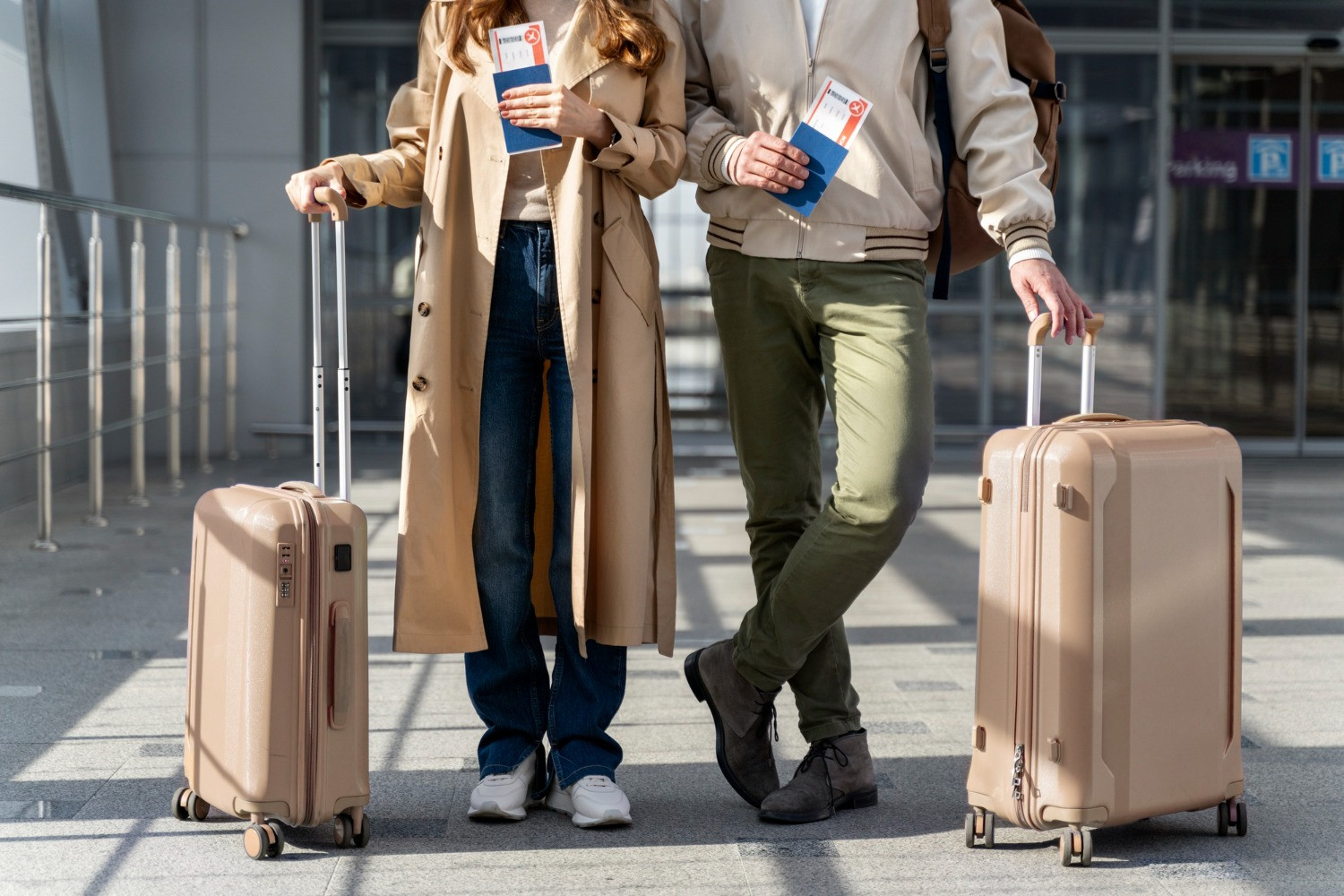What's the difference between cabin and hold baggage?
Cabin baggage is what you keep with you during your flight. It's usually your travel bag or suitcase that you take with you on board the plane. To be accepted in the cabin, it must comply with strict size and weight criteria, which allow it to be stowed in the compartments provided for this purpose, located above or under the seats. You don't need to check it in, as it stays with you throughout the journey.
Hold baggage, on the other hand, is transported in the hold of the aircraft to your destination. This implies different rules regarding size, weight and check-in procedures. Depending on airline policy, additional charges may apply to hold baggage, even if it complies with weight limits. It is essential to find out in advance about the specific baggage policy of your chosen airline.
It's also worth noting that some airlines allow certain items in the cabin, but forbid them in the hold, and vice versa. So it's important to familiarize yourself with specific baggage rules and restrictions to avoid any surprises during your trip.
How do I check in my baggage online?
As you probably know, the check-in procedure is an essential part of your air travel experience. It's through this process that passengers confirm their intention to travel and, consequently, their presence on board the aircraft. Checking in hold baggage also guarantees its traceability throughout the journey.
Most airlines offer online check-in services. You can validate your trip from the comfort of your own home, hours or even days before departure, thanks to a dedicated website or mobile app. You can choose your preferred seat on board the aircraft and specify the number of baggage items you wish to check in the hold. Once you've completed this paperless procedure, you'll receive a confirmation e-mail giving you access to your boarding pass.
Depending on the flight, it is even possible toprint the baggage label directly at home. In this case, it is important to carefully follow the instructions concerning the format, color and folding of the label. We recommend that you use a special bag, preferably waterproof, to make it easier to drop off your luggage at a self-service baggage drop-off point at the airport. Be sure to check the weight of your suitcase before you leave, possibly using a luggage scale, to avoid any inconvenience.
How do I check in my baggage at the airport kiosks?
Wondering how to check in your baggage at the airport's automatic kiosks? On the day of your flight, if the airport is equipped with these kiosks, you can check in on your own. It's a simple process, similar to the online procedure. Simply follow the on-screen instructions to obtain your boarding pass and baggage tag.
Be sure to keep your receipt in a safe place, then peel off the barcode and stick it to your luggage. Once you've removed the label, attach it to a handle on your luggage. Then proceed to the baggage drop-off area. There, after presenting your boarding pass, you'll be asked to scan your baggage tag. Once this step has been completed, your checked bag is placed on the conveyor belt, from where it follows the path to the aircraft's hold. You can then take your hand baggage to your boarding gate, after passing through security.
Good to know: you should always check the information on your ticket, especially the destination indicated. Also, don't forget to remove the labels from your previous flights to avoid any unnecessary confusion.
Prefer to take your baggage to the check-in counter?
If you prefer to go to the check-in counter with your baggage, you have this option at your disposal. Whether it's your first flight, you have questions or doubts, or you simply prefer human contact, you can talk to the airport agents at the check-in desks. However, it's essential to arrive early to avoid the crowds and meet the check-in deadline.
For domestic flights, we generally recommend arriving at the airport at least 1 to 2 hours before takeoff, and up to 3 hours for long-haul flights.
Once your flight documents and identity papers have been checked, the counter agent will examine your checked baggage and check it in if it meets the required criteria, such as dimensions and weight.

